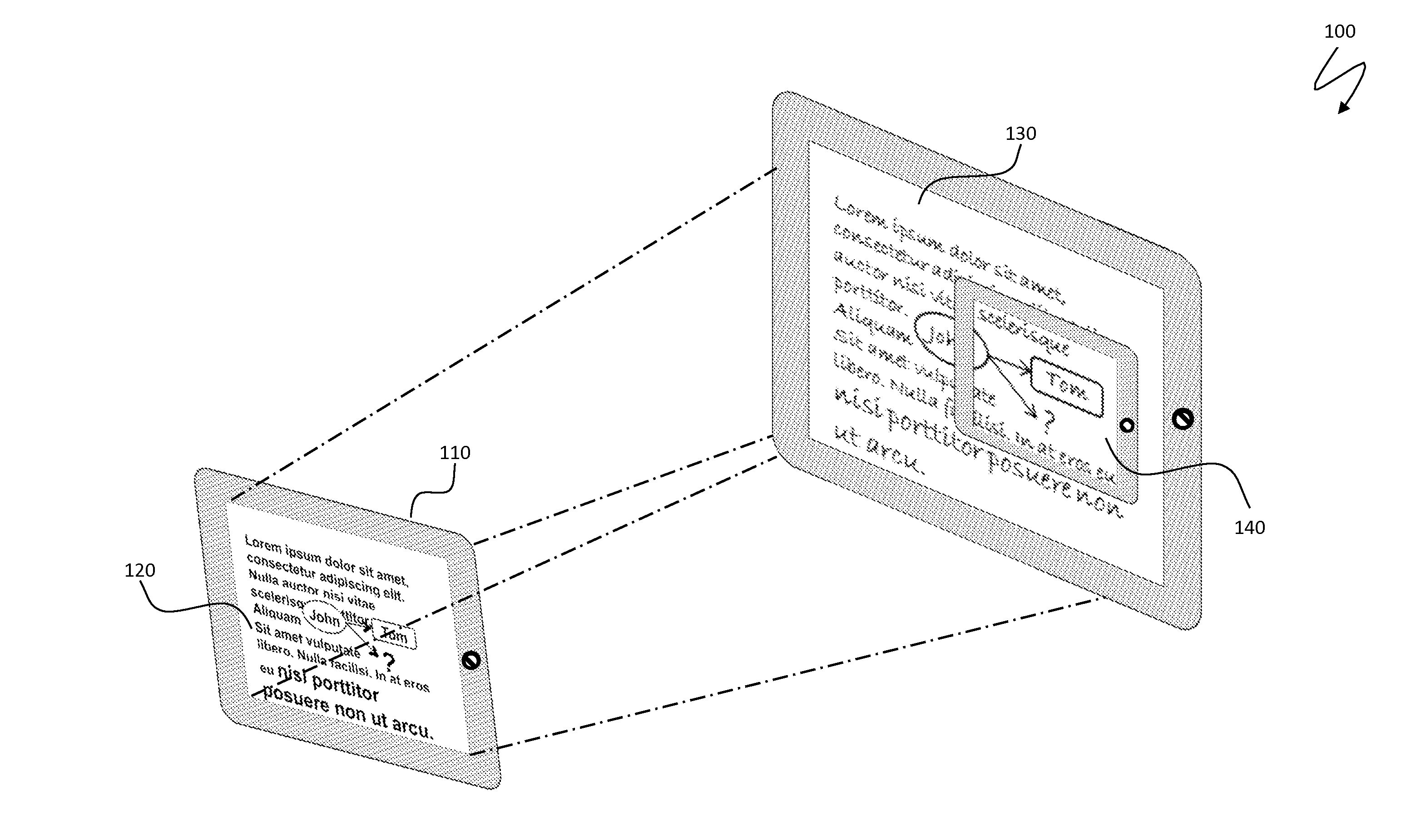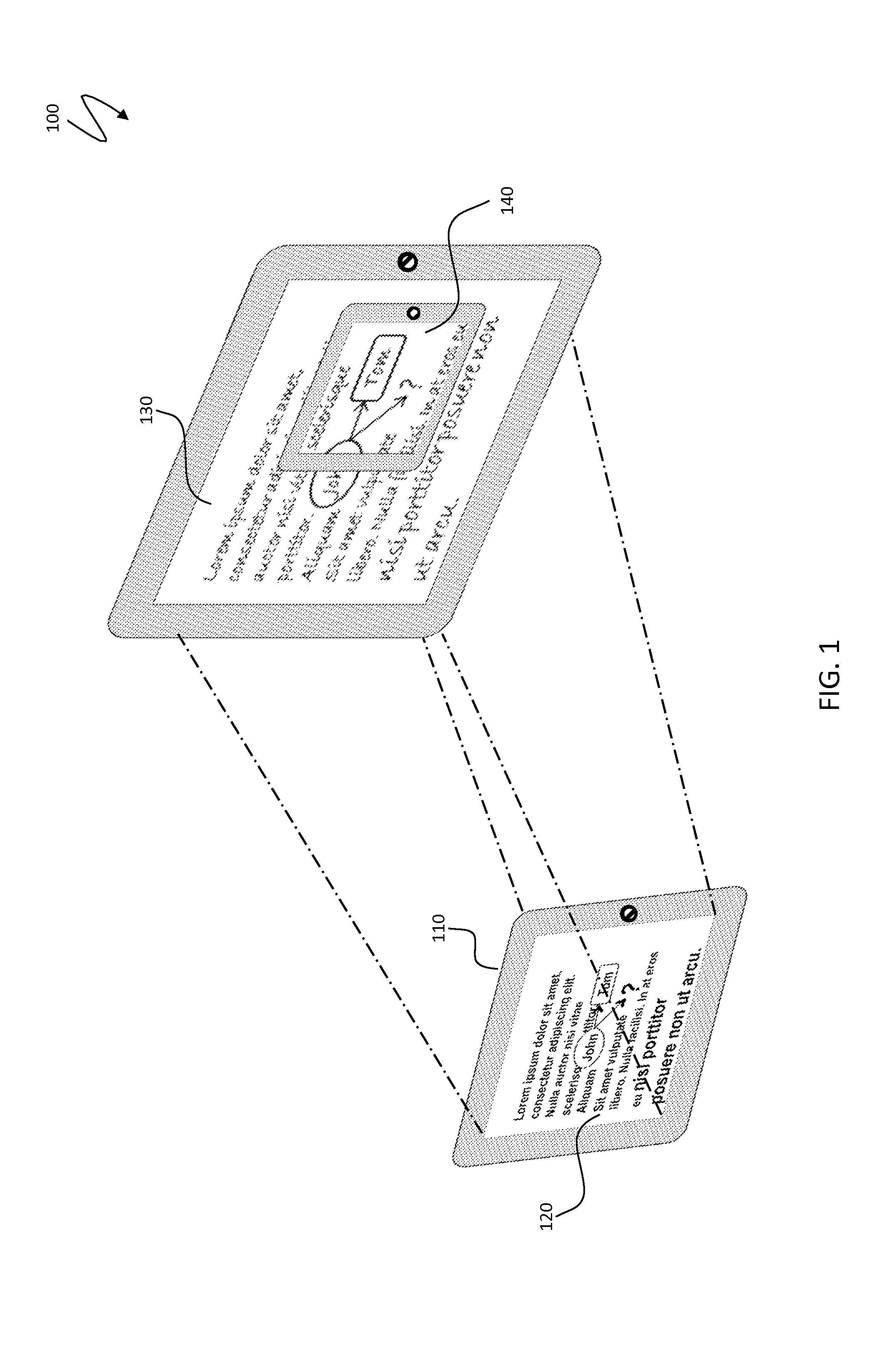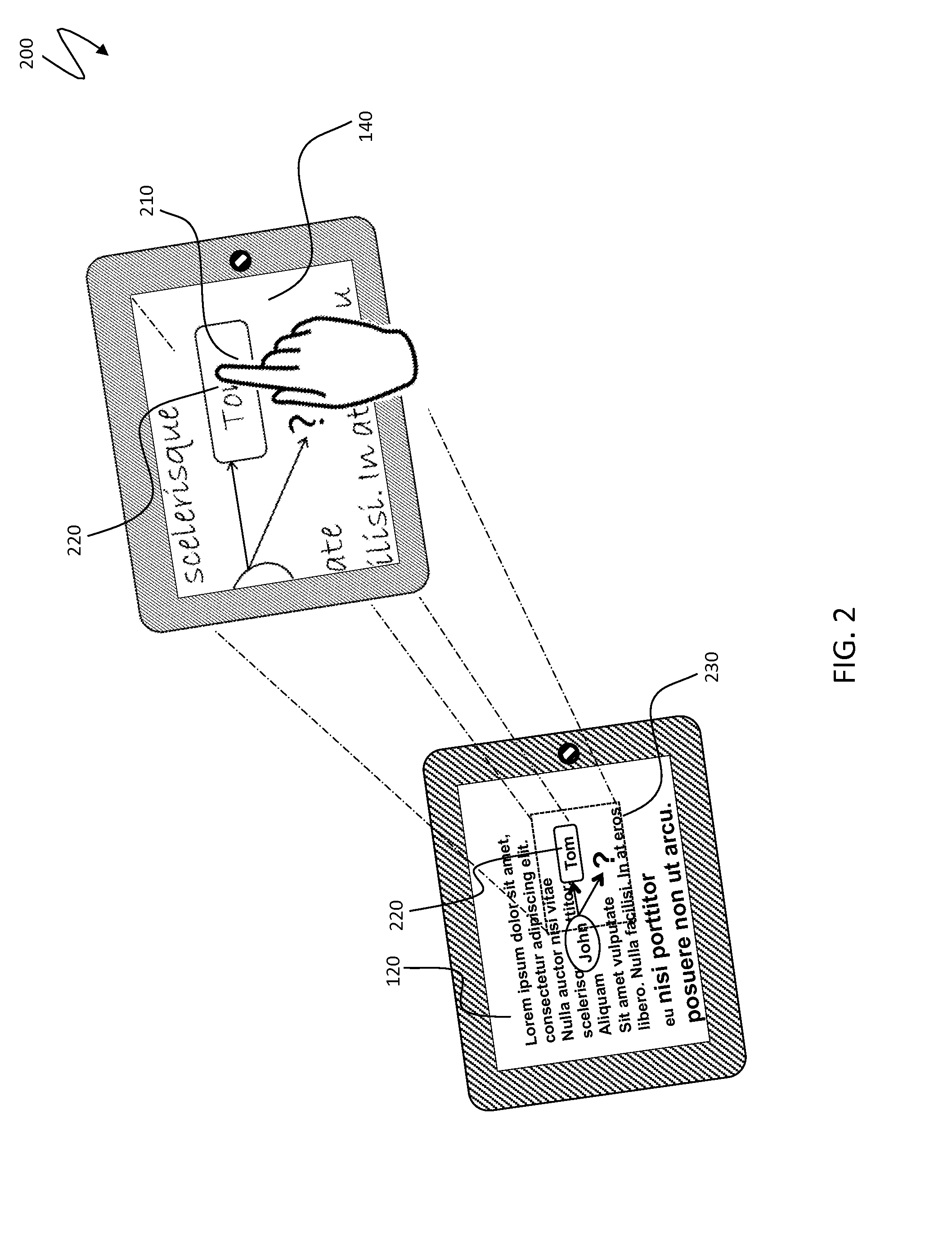Zoomable pages for continuous digital writing
a digital writing and page zoom technology, applied in the field of automatic screen adaptation for handwritten data entry, can solve the problems of preventing users from writing fast and maintaining a normal small-to-medium size handwritten letter, and virtually impossible to accurately write with normal size handwritten elements, so as to facilitate the entry of writing into different parts, facilitate page return, and facilitate the effect of entering writing into different parts
- Summary
- Abstract
- Description
- Claims
- Application Information
AI Technical Summary
Benefits of technology
Problems solved by technology
Method used
Image
Examples
Embodiment Construction
[0035]The system described herein provides a mechanism for continuous writing on touch screens of tablets using a software emulated, spatially synchronized combination of an original page and a magnified page of a digital handwritten note to satisfy high resolution viewing requirement and simultaneously avoid limitations on digital writing imposed by touch technology, screen surface and other factors, such as supported in a Penultimate by Evernote software, developed by the Evernote Corporation of Redwood City, Calif. The system relies upon two-level screen viewing, manual selection of a fragment of a handwritten page for editing, displaying the fragment in both views using a mapping portion to indicate a position of the fragment on the viewing screen, automatic scrolling, carriage return and other features ensuring quality writing and viewing experiences.
[0036]FIG. 1 is a schematic illustration 100 of viewing, magnified and authoring screens. A tablet device 110 displays a page 120...
PUM
 Login to View More
Login to View More Abstract
Description
Claims
Application Information
 Login to View More
Login to View More - R&D
- Intellectual Property
- Life Sciences
- Materials
- Tech Scout
- Unparalleled Data Quality
- Higher Quality Content
- 60% Fewer Hallucinations
Browse by: Latest US Patents, China's latest patents, Technical Efficacy Thesaurus, Application Domain, Technology Topic, Popular Technical Reports.
© 2025 PatSnap. All rights reserved.Legal|Privacy policy|Modern Slavery Act Transparency Statement|Sitemap|About US| Contact US: help@patsnap.com



